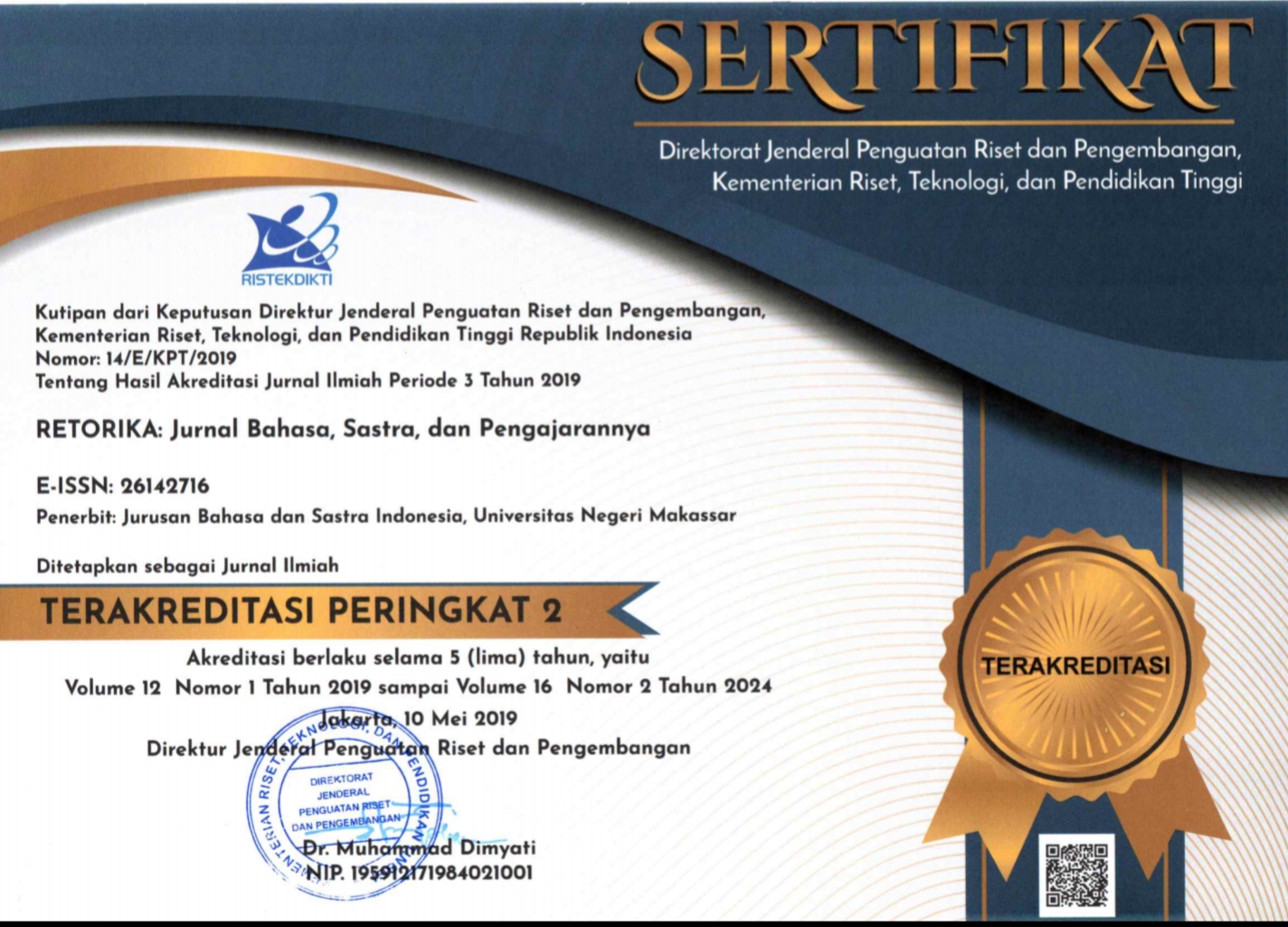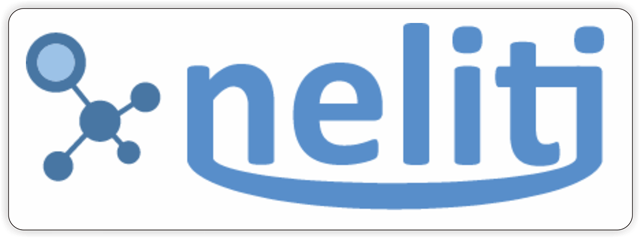JAVANESE LANGUAGE DEVELOPMENT THROUGH CAMPURSARI: FERGUSON’S LANGUAGE PLANNING PERSPECTIVE
(1) Universitas PGRI Madiun
(*) Corresponding Author
DOI: https://doi.org/10.26858/retorika.v13i2.13281
Abstract
Keywords
Full Text:
PDFReferences
Achsani, F. (2019). Sastra dan Masyarakat: Fenomena Ambyar Pada Lirik Lagu Didi Kempot. ESTETIK : Jurnal Bahasa Indonesia, 2, 153. https://doi.org/10.29240/estetik.v2i2.1192
Adipitoyo, S. (1999). Morfofonemik Bahasa Jawa Dialek Surabaya. Pusat Pembinaan Dan Pengembangan N Nasional.
Dungcik, M., & Bety, B. (2014). STANDARISASI SISTEM TULISAN JAWI DI DUNIA MELAYU: Sebuah Upaya Mencari Standar Penulisan yang Baku Berdasarkan Aspek Fonetis. Tamaddun: Jurnal Kebudayaan Dan Sastra Islam, 14(2), 213–230.
Ferguson, C. A. (1971). Language structure and language use: essays (Vol. 1). Stanford University Press.
Grinsted, A., & Toft, B. M. (1994). Leksikografi og terminologi. In Oversættelseshåndbogen (pp. 61–75). Handelshøjskolens Forlag.
Haarmann, H. (1990). Language planning in the light of a general theory of language: A methodological framework. International Journal of the Sociology of Language, 86(1), 103–126.
Haugen, E. (1983). The implementation of corpus planning: Theory and practice. Progress in Language Planning: International Perspectives, 31, 269–290.
Kaplan, R. B. (1994). Language policy and planning: Fundamental issues. Annual Review of Applied Linguistics, 14, 3–19.
Kholidah, U. (2015). Siswa dan Guru dalam Pembelajaran Kajian Sosiolinguistik Di MTs Al-Hikmah Pasir Demak. Ranah, 4, 105–114.
Nekvapil, J. (2011). The history and theory of language planning. Handbook of Research in Second Language Teaching and Learning, 2, 871–887.
Neustupný, J. V. (1978). Post-structural approaches to language: Language theory in a Japanese context. Columbia Univ Pr.
Rohman, N. (2016). Pemanfaatan Aspek Stilistika Pragmatik Sebagai Strategi Mengkritik Dalam Wacana Lirik Lagu Campursari. Universitas Gadjah Mada.
Rubin, J., & Jernudd, B. (2019). Can Language be Planned?: Sociolinguistic Theory for Developing Nations. University of Hawaii Press.
Sasangka, S. S. T. W. (2011). Bunyi-bunyi distingtif bahasa Jawa. Elmatera Publishing.
Sukoyo, J. (2011). INTERFERENSI BAHASA INDONESIA DALAM ACARA BERITA BERBAHASA JAWA “ KUTHANE DHEWE ” DI TV BOROBUDUR SEMARANG. VII, 95–103.
Wardani, S. (2015). Pemanfaatan Teknologi Augmented Reality (AR) untuk Pengenalan Aksara Jawa pada Anak. Jurnal Dinamika Informatika, 5(1).
Widiyono, Y. (2013). Nilai Pendidikan Karakter Tembang Campursari Karya Manthous. Jurnal Pendidikan Karakter, 2(2).
Yuwono, U., & Lauder, M. R. M. T. (2005). Pesona bahasa: langkah awal memahami linguistik. Gramedia Pustaka Utama
Article Metrics
Abstract view : 443 times | PDF view : 67 timesRefbacks
- There are currently no refbacks.
Copyright (c) 2020 Endang Sri Maruti

This work is licensed under a Creative Commons Attribution-NonCommercial 4.0 International License.
Published by:
Department of Indonesian Language, Faculty of Languages and Literature, Universitas Negeri Makassar in cooperate with Asosiasi Dosen Bahasa dan Sastra Indonesia (ADOBSI) and Ikatan Program Studi Pendidikan Bahasa dan Sastra Indonesia (IKAPROBSI).
Address: Department of Indonesian Language Office, DG Building Second Floor, UNM Parangtambung, Daeng Tata Raya Street, Makassar, South Sulawesi, Indonesia
 Email: retorika@unm.ac.id
Email: retorika@unm.ac.id

RETORIKA: Jurnal Bahasa, Sastra,dan Pengajarannya is licensed under a Creative Commons Attribution-NonCommercial 4.0 International License.
















